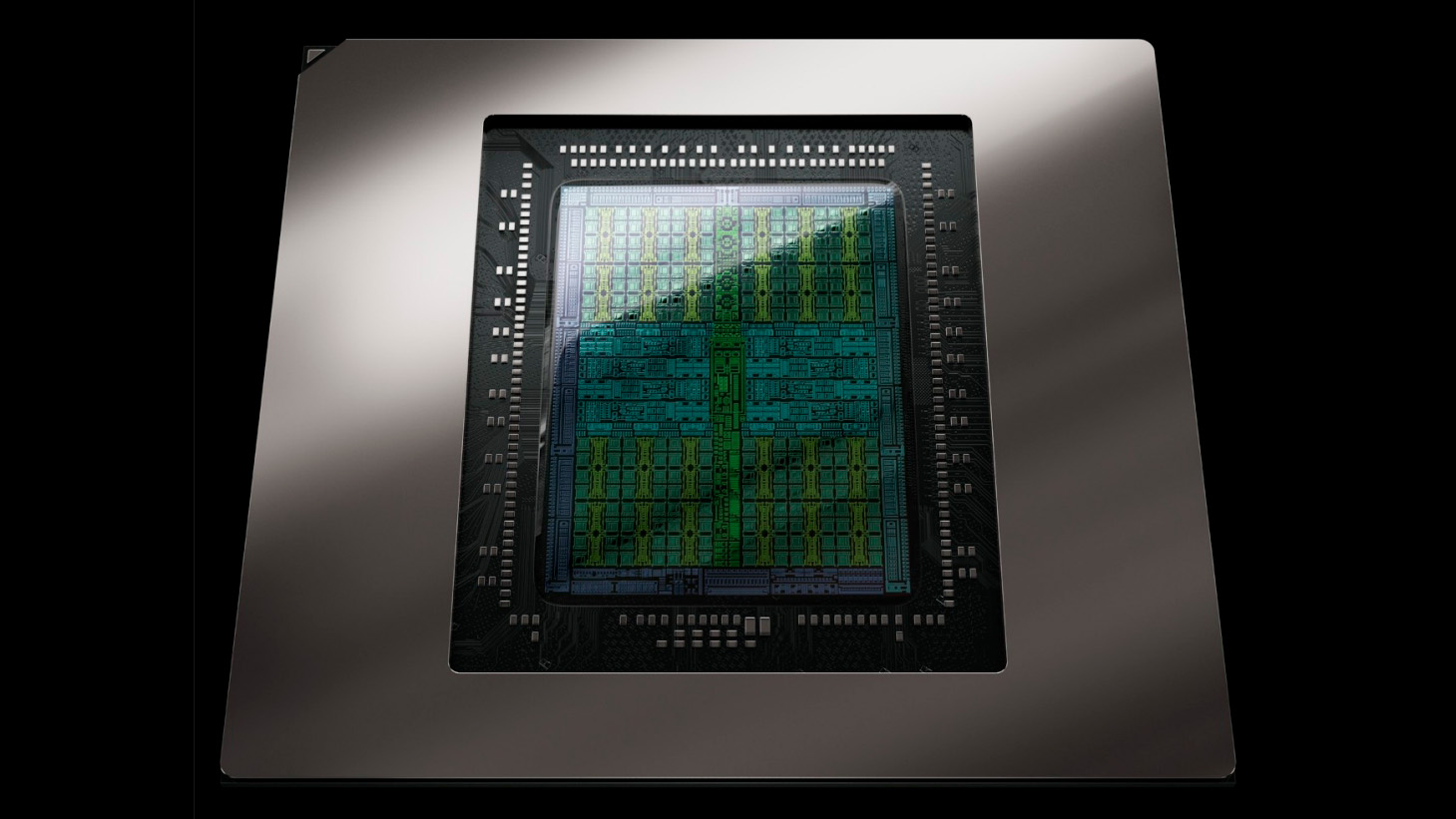GeForce RTX 5050 listed with 2,560 CUDA cores and 2,250 MHz boost clock

The German IT company Kiebel (via momomo_us) has inadvertently disclosed the specifications of the unreleased GeForce RTX 5050. The entry-level Blackwell graphics card is anticipated to launch shortly, ushering in a new generation of budget-conscious gaming laptops.
Kiebel has listed the GeForce RTX 5050 as part of the vendor's Helix 13 laptops. Consequently, the specifications correspond to the mobile variant of the GeForce RTX 5050 and should not be confused with the desktop variant, although both variants may share some similarities.
According to Kiebel, the GeForce RTX 5050 will reportedly feature the GB207 silicon, which may represent Nvidia's smallest Blackwell silicon. The precise die size remains unknown at this time; however, it is a given that GB207 will be produced using TSMC's 4N FinFET process node, like all previous Blackwell silicon.
The German vendor appears confident that the GeForce RTX 5050's silicon will be delivered featuring 20 Streaming Multiprocessors (SMs), equivalent to 2,560 CUDA cores. If this information is accurate, the forthcoming Blackwell-powered graphics card is also expected to be equipped with 80 5th-generation Tensor cores and 20 4th-generation RT cores.
The configuration is reminiscent of the one employed by Nvidia for the previous generation GeForce RTX 4050 Laptop GPU. Nevertheless, the GeForce RTX 5050 is complemented by the latest Blackwell architecture, which should yield noticeable performance enhancements on its own.
Nvidia GeForce RTX 5050 Specifications*
Graphics Card | GeForce RTX 5050 | GeForce RTX 4050 Laptop GPU |
|---|---|---|
Architecture | GB207 | AD107 |
Process Technology | TSMC 4N FinFET | TSMC 5nm |
Transistors (Billion) | ? | 18.9 |
Die size (mm²) | ? | 159 |
SMs / CUs | 20 | 20 |
GPU Shaders (ALUs) | 2,560 | 2,560 |
Tensor / AI Cores | 80 | 80 |
Ray Tracing Cores | 20 | 20 |
Base Clock (MHz) | 2,235 | 1,455 |
Boost Clock (MHz) | 2,520 | 1,755 |
VRAM Speed (Gbps) | ? | 16 |
VRAM (GB) | ? | 6 |
VRAM Bus Width | 128-bit | 96-bit |
L2 / Infinity Cache (MB) | ? | 12 |
Render Output Units | 48 | 48 |
Texture Mapping Units | 80 | 80 |
TFLOPS FP32 (Boost) | 12.9 | 8.9 |
TFLOPS FP16 (INT4/FP4 TOPS) | 12.9 | 8.9 |
Bandwidth (GB/s) | ? | 192 |
TBP (watts) | ? | 50 |
*Specifications are unconfirmed.
The GeForce RTX 5050 appears to exhibit significantly elevated clock speeds. Kiebel has detailed the graphics card's specifications, noting a base clock speed of 2,235 MHz and a boost clock speed of 2,520 MHz, which are 54% and 44% higher, respectively, than those of the GeForce RTX 4050 Laptop GPU. For those interested in the FP32 metric, the GeForce RTX 5050 provides up to 45% higher FP32 performance than the GeForce RTX 4050 Laptop GPU.
Get Tom's Hardware's best news and in-depth reviews, straight to your inbox.
Kiebel's listing confirms that the GeForce RTX 5050 will likely have 8GB of memory capacity and a 128-bit memory interface. There were rumors that it would feature GDDR7 memory.
Still, recent information, allegedly obtained from Nvidia partners, seemingly indicates that the Blackwell-based graphics card will instead stick to GDDR6 because of cost and availability concerns. To secure a reliable supply of GDDR6, Nvidia's partners are said to be placing orders with Samsung and SK hynix. Unfortunately, Kiebel did not provide details on the speed of the GDDR6 memory, making it impossible to compare the memory bandwidth of the GeForce RTX 5050 with its predecessor.
Kiebel offers delivery times between three and seven days on its Helix 13 laptops with the GeForce RTX 5050. We've also seen GeForce RTX 5050-equipped laptops popping up everywhere. Asus Vietnam has listed the ROG Strix G16 (G615JHR-S5069W) on its website with a placeholder price tag. Meanwhile, Lenovo's Legion 5i (83LY0024CC) is already up for purchase at Newegg for $2,233. It shouldn't take long before Nvidia officially announces the GeForce RTX 5050.
Follow Tom's Hardware on Google News to get our up-to-date news, analysis, and reviews in your feeds. Make sure to click the Follow button.

Zhiye Liu is a news editor, memory reviewer, and SSD tester at Tom’s Hardware. Although he loves everything that’s hardware, he has a soft spot for CPUs, GPUs, and RAM.
-
Notton RTX 4050 mobile is a 96-bit mem bus card, not 128, otherwise it wouldn't arrive at 6GB.Reply
RTX 3050 mobile is both a 128-bit and 96-bit mem bus card. Which is why it has both 6GB and 4GB models. -
artk2219 Reply
Those clocks should provide for a very healthy performance boost, still only 8GB VRAM, but eh so long as its 1080P at medium settings it should be fine for the time being.Admin said:German IT company Kiebel reveals the specifications for Nvidia's unreleased GeForce RTX 5050 graphics card.
GeForce RTX 5050 listed with 2,560 CUDA cores and 2,250 MHz boost clock : Read more -
RedBear87 Reply
Pretty much, but the small VRAM buffer is making it increasingly unattractive to upgrade for people with GPUs from previous generations that fall in this market segment. I guess Nvidia is probably looking more at the pre-built (and laptop) markets...artk2219 said:Those clocks should provide for a very healthy performance boost, still only 8GB VRAM, but eh so long as its 1080P at medium settings it should be fine for the time being. -
emike09 A 5050 with 8GB VRAM seems just fine. You aren't a serious gamer if you're buying into a 5050. Or just need a little boost in your creative apps. Even basic 3D CAD would run fine on this. Strapping 8GB to the largest consumer segment, the xx60 series, was the real sin.Reply -
usertests It's a legitimate upgrade over 3050/4050 laptops that had 4-6 GB of memory. These laptops become very cheap after they hit the clearance bin, and now they'll start to have 8GB.Reply
The desktop 5050 will be faster than the 3050 8GB desktop cards. It will become more interesting the cheaper it can be obtained.